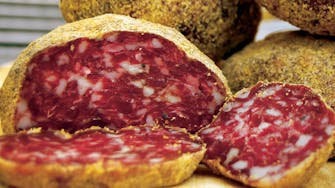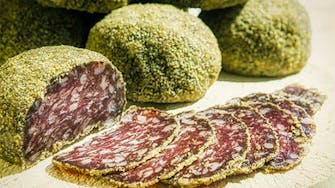La pitina
I would like to introduce you a regional Friulian sausage with a unique flavour, a kind of product that deserves greater fame and which is beyond any doubt one of the most characteristic and at the same time most unrecognised sausages in our country.
I am talking about pitina, whose origin, like that of many poor gastronomic products of our peninsula, was to allow the mountain populations of a circumscribed territory of Friuli Venezia Giulia, to keep parts of the hunting booty to feed their families in the periods when hunting would have been impossible due to the heavy snowfall of the territory. This was the procedure for its realization: the pulp of the game was chopped with a knife and made into coarse meatballs (pitina is a sort of diminutive in the local lexicon of meatball). Since pork intestines were not available and could not be reared at those latitudes, instead of stuffing them like most Italian cured meats, in order to provide them with a sort of protective cover, the pitina were passed in cornmeal and then placed around the hearth to smoke. Pitina, which also has a different nominal conjugation according to the place of production (peta, petuccia), as well as being a Slow Food Presidium, has recently obtained the IGP certification, the Protected Geographical Indication, and is produced exclusively in the province of Pordenone in the mountain municipalities of Andreis, Barcis, Cavasso Nuovo, Cimolais, Claut, Erto e Casso, Frisanco, Maniago, Meduno, Montereale Valcellina, Tramonti di Sopra and Tramonti di Sotto. I do not add anything else about its organoleptic characteristics. I invite you, however, to visit the places of production, which are as fascinating as they are outside the most famous tourist circuits. And of course to taste the pitina. It is worth it, believe me.
[Mario D'Aurizio]



